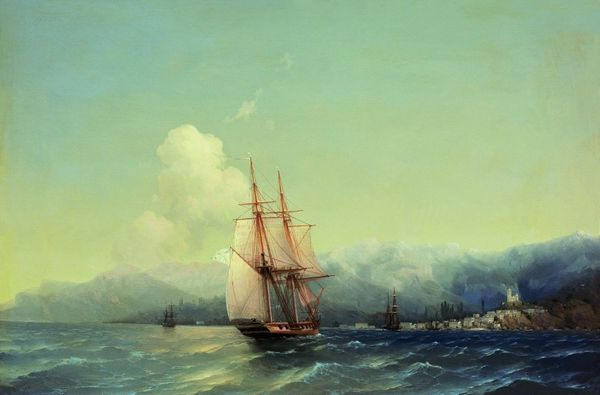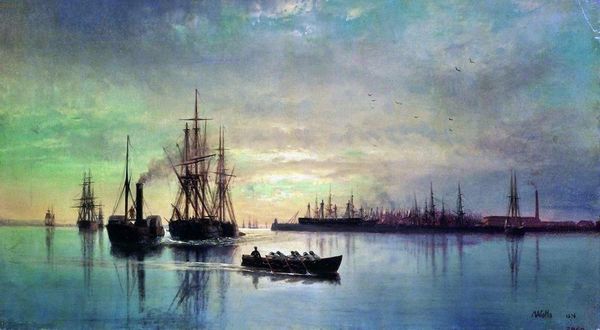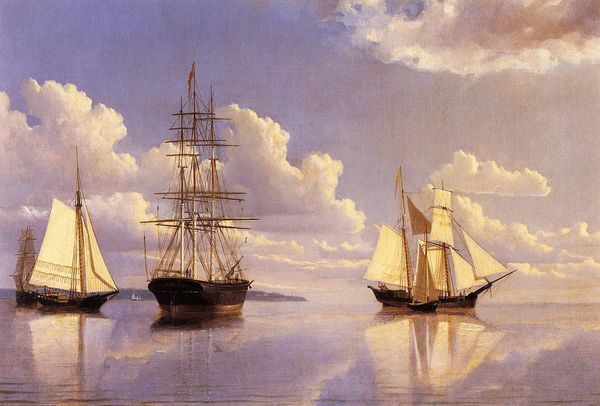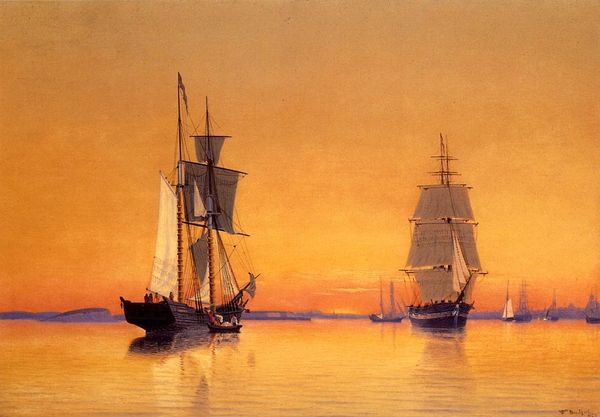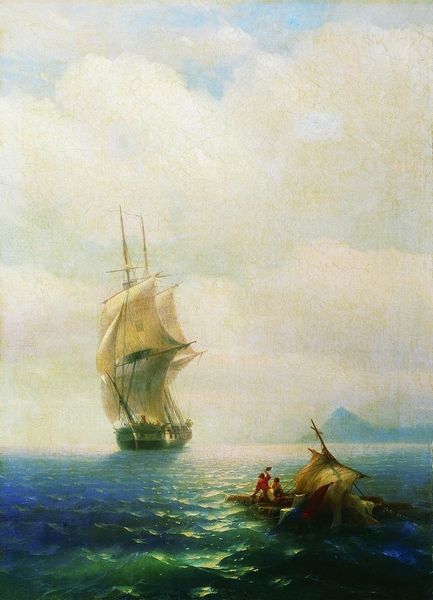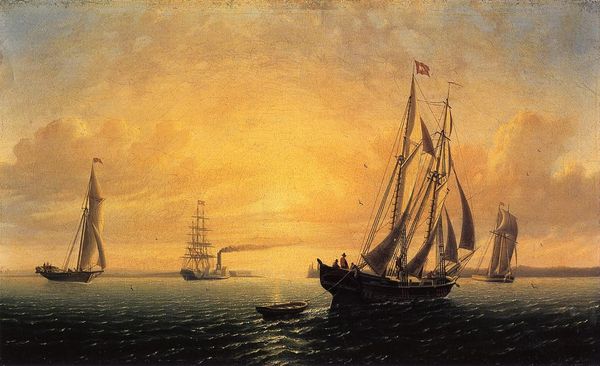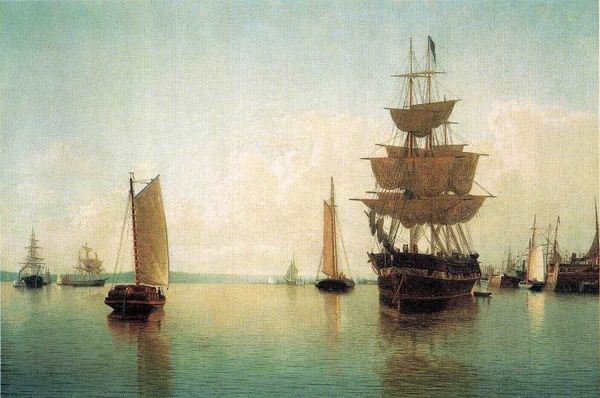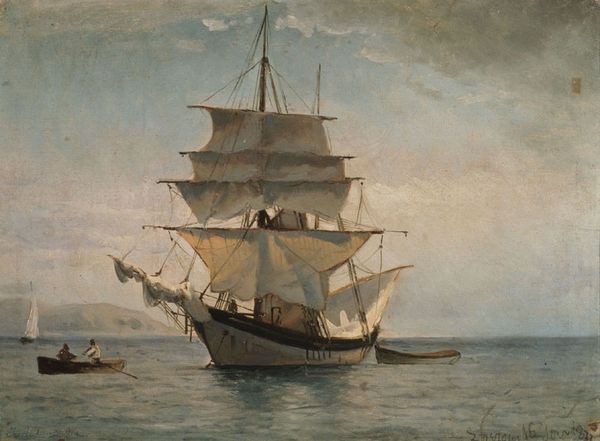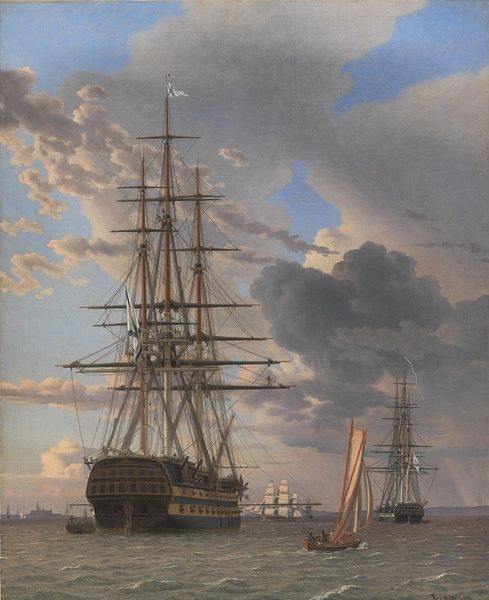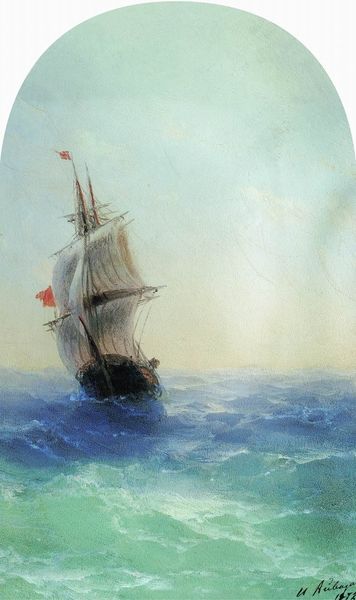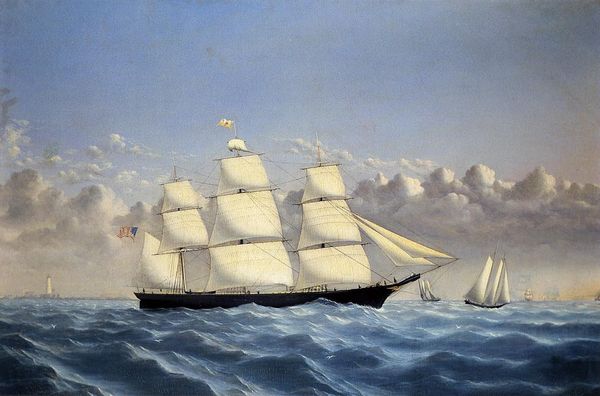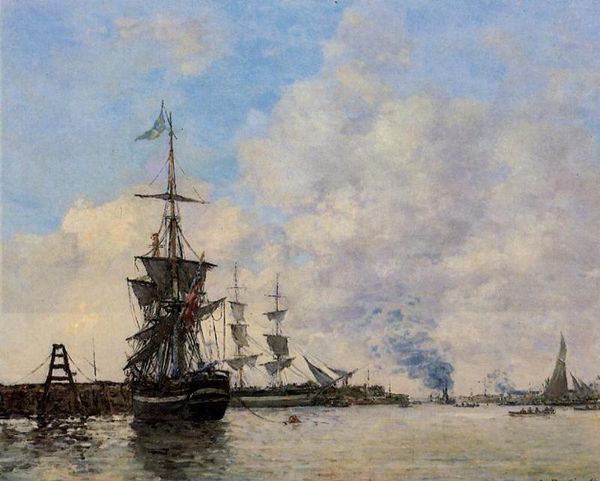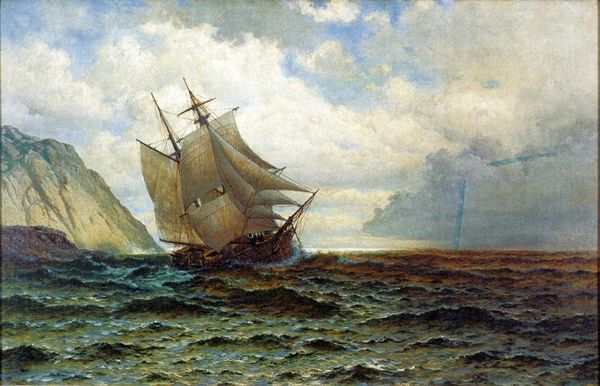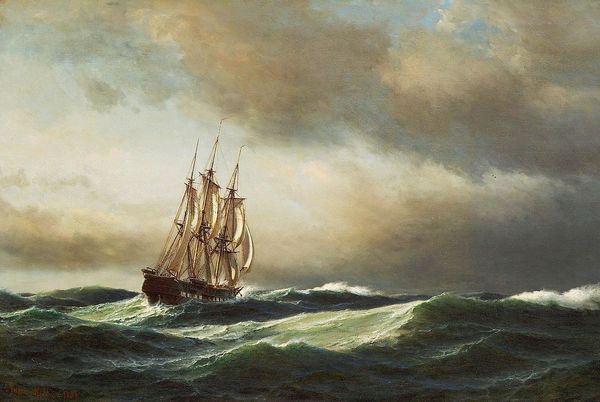
Copyright: Public domain
Editor: Here we have Lev Lagorio's "In the Gulf of Finland," painted in 1881, using oil paints. It’s quite serene, a lone sailboat being towed. What draws your attention in this piece? Curator: What strikes me is the relationship between labor and industrial progress depicted here. The sailing ship, a symbol of past maritime power, is now reliant on the steam-powered tugboat. What does it say about the transition of power? The shift to modernization, to potentially oppressive labour practices? How does this landscape frame that transition, politically? Editor: That's a perspective I hadn't considered. I was focusing on the technical aspect: the soft light and the reflections on the water. But thinking about it in terms of power dynamics is interesting. How might the individual sailor or worker feature into your reading? Curator: Consider the lone figure in the tugboat; perhaps this symbolizes the individual subjugated to the machinations of industrialization. Or the larger ship about to bring untold supplies, and also colonialism and new political views? How might we reconcile Romantic landscape traditions with the social realities embedded within this scene? Editor: It’s thought-provoking how one image can hold such contrasting ideas. Curator: Precisely! It shows us that art isn't made in a vacuum. We have to critically engage with these broader conversations surrounding the moment it was created. Editor: I definitely see the painting in a new light now. It is so interesting how historical and cultural forces have shaped the narrative of progress represented in art. Curator: Exactly! It highlights the crucial need for continuous critical engagement with these narratives, especially with those seemingly tranquil landscapes that carry within themselves socio-political undertones.
Comments
No comments
Be the first to comment and join the conversation on the ultimate creative platform.
